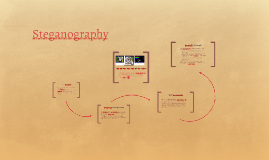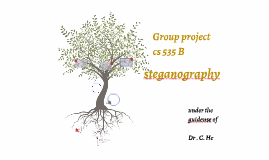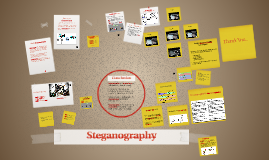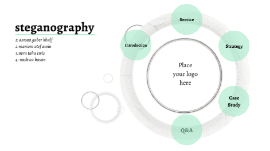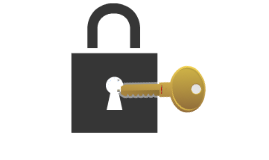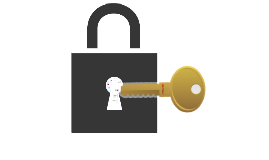Steganography
Transcript: 1 m 2 p b Y g X S Concealed Writing Steganography What is it? The word Steganography comes from the greek words, steganos, which means "covered, concealed or protected" and the word graphein, which means "writing". Steganography is one kind of technique to hide messages, that you don't want to be visible for others, other than the Recipient. For example it can be hidden inside of an image or a shopping list. Steganography Example Hi, could you go to the store for the campfire later, and some kind of instrument you can play on? P.S I got bread at home. Ham 5kg Ice 20kg Mustard x 3 bottles Yeast x 1 bag Nuts x 5 bags Aubergine x 2 Meat 5kg Eggs x 2 boxes Iceberg Lettuce x 1 head Sausage x 1 pack Apple Juice x 2 Lactose free milk x 2 Edam 1kg Xylophone Answer Hi, could you go to the store for the campfire later, and some kind of instrument you can play on? P.S I got bread at home. Ham 5kg Ice 20kg Mustard x 3 bottles Yeast x 1 bag Nuts x 5 bags Aubergine x 2 Meat 5kg Eggs x 2 boxes Iceberg Lettuce x 1 head Sausage x 1 pack Apple Juice x 2 Lactose free milk x 2 Edam 1kg Xylophone H When was it first seen? Steganography was first seen 400 BC, when an historian wrote about an example, how a tyrant used his servant as the message. He shaved all of his hair and then marked his message on his scalp. Steganography has been used for centuries, but it wasn't until 1985 it was used digitally. P Physical Techniques Steganography can be used both physically and digitally, and there's a lot of different techniques that can be used. A lot of the techniques that have been discovered isn't all of them, you can come up with whatever you want as long as it hides the message. Some examples of physical techniques are: You can hide the message on an envelope and then hide it by covering it with a postage stamp. You can hide the message in a letter by using invisible ink between the lines. You can hide the message in a letter or similar, by on purpose writing the word wrong, then take the letter that is wrong or missing and then you find the message. Something like this Once upon a midnight dreary, whille I pondered, weak and weary, Over many a quaint and curios volume of foregotten lore, While I nodded, nearly napping, suddely there came a tapping, As of some one gently rapping, rapping at my chamber dooor. "'T'is some visitor," I mutterred, "tapping at my chambere door-- Only this, and nothing more." Once upon a midnight dreary, whille I pondered, weak and weary, Over many a quaint and curios volume of foregotten lore, While I nodded, nearly napping, sudde(n)ly there came a tapping, As of some one gently rapping, rapping at my chamber dooor. "'T'is some visitor," I mutterred, "tapping at my chambere door-- Only this, and nothing more." LENORE D Digital Steganography There is also digital Steganography, it can be used in many ways, it is very complicated when using it. Some simple techniques are. You can hide the message by making it hidden in the sourcecode. You can use steganography for audio signals You can hide the message by making the text the same color background A Thank you for listening!







